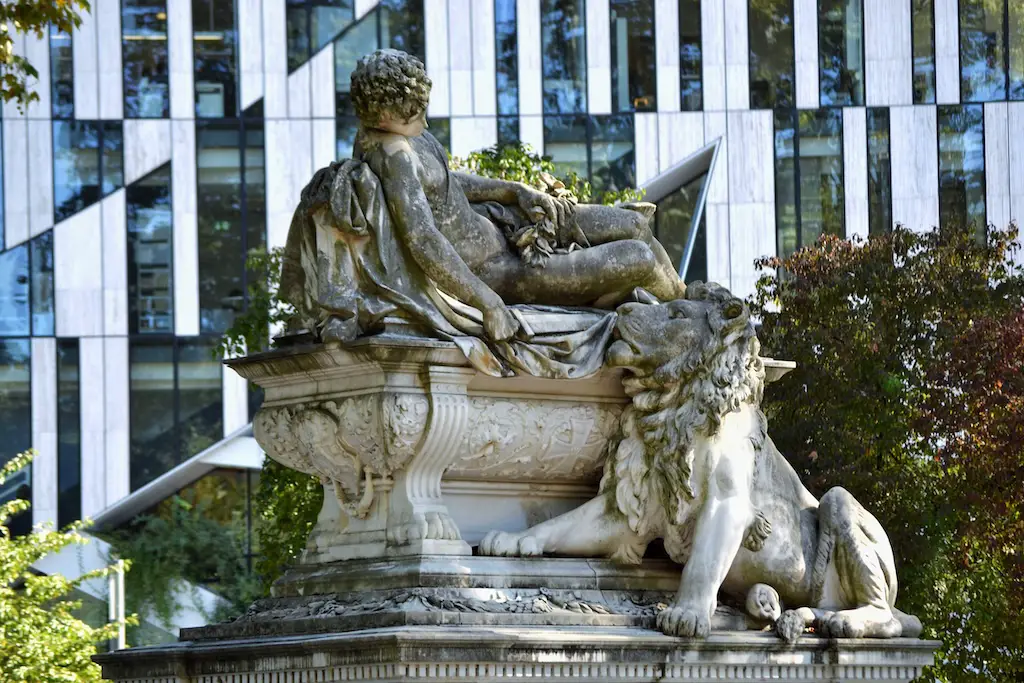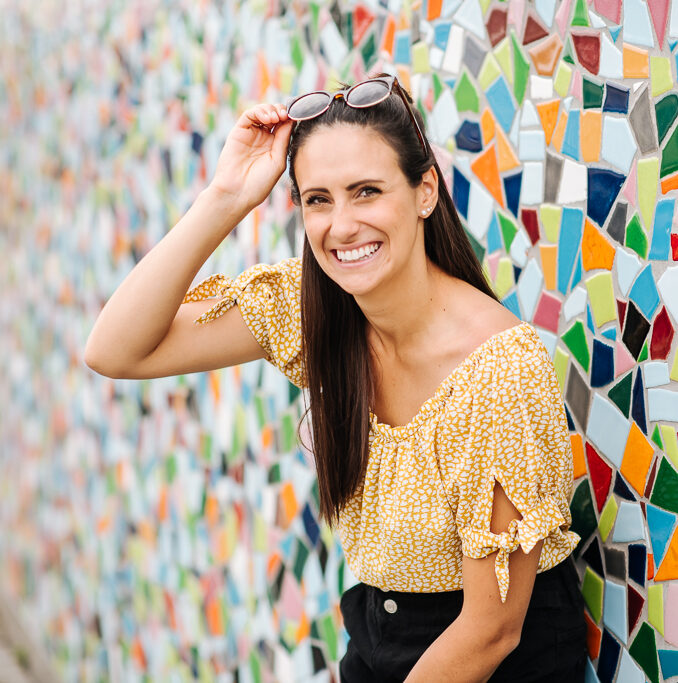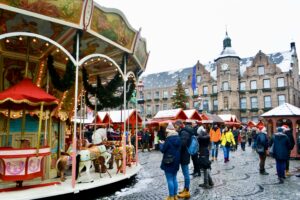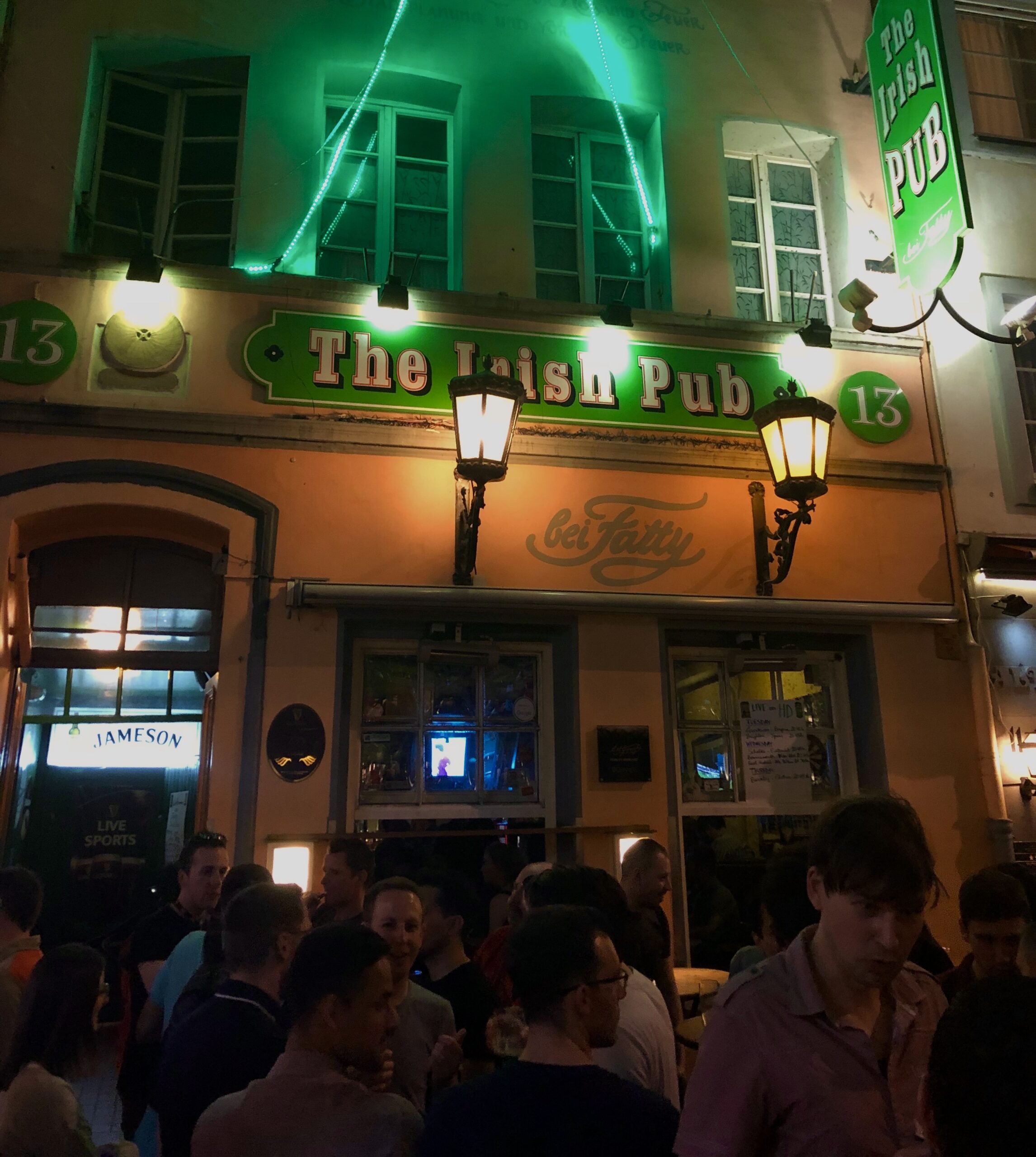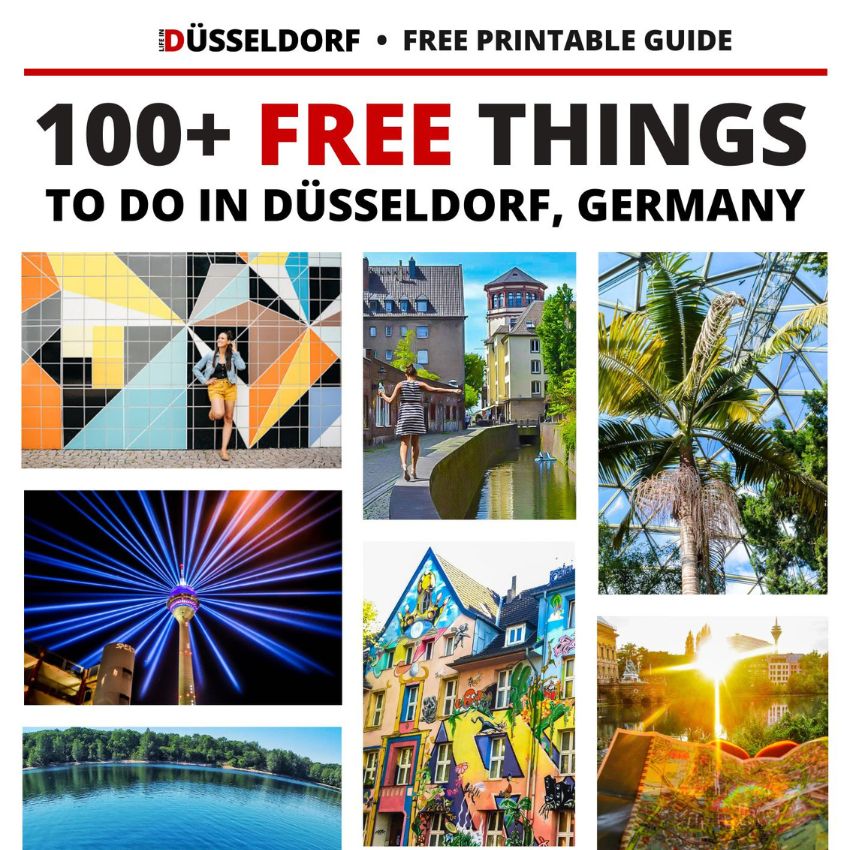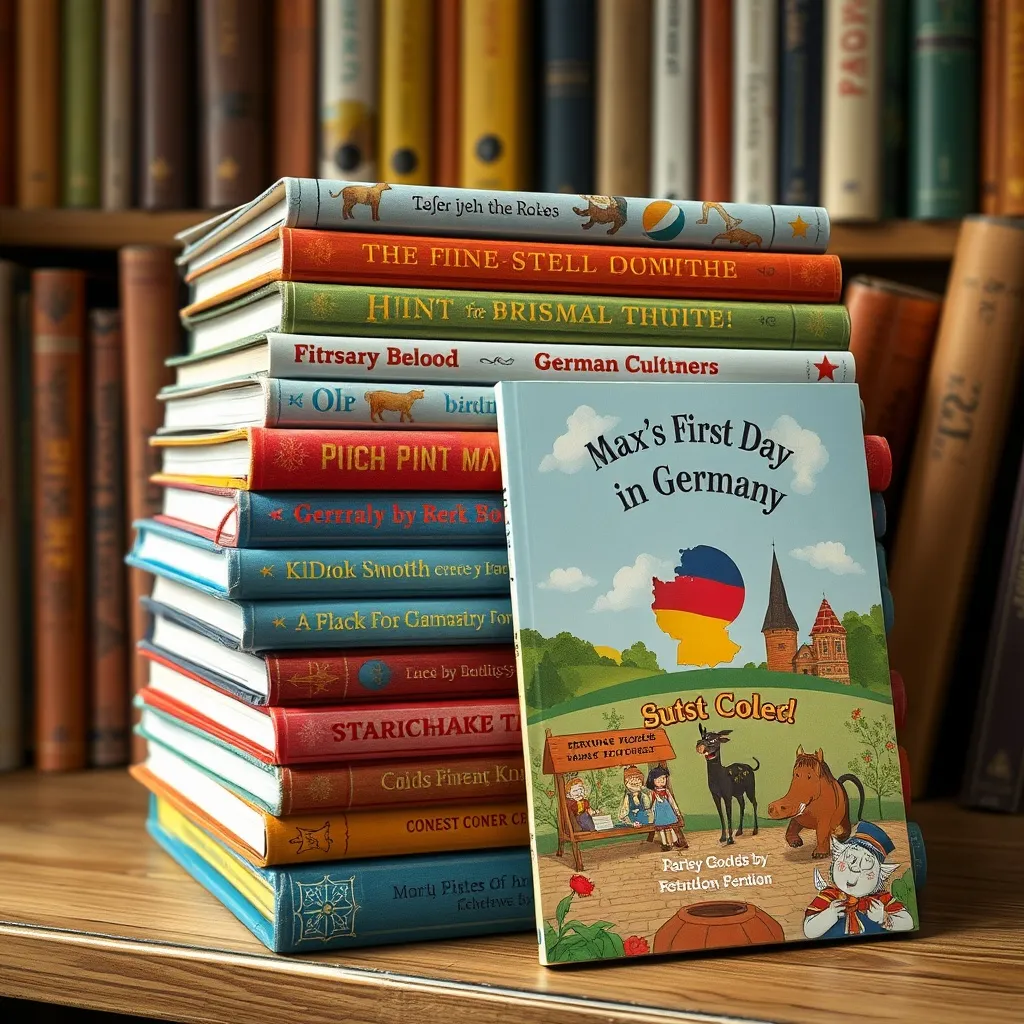Welcome to Life in Düsseldorf! Whether you’re a local or a visitor, these Düsseldorf monuments offer a captivating glimpse into the city’s rich and diverse past. In this blog post, we’ll explore some of the most significant monuments and memorials in Düsseldorf, each telling a unique story about the city’s heritage.
How many of these stories do you know already?!
From commemorations of historical figures to poignant reminders of the past, these landmarks are must-see destinations for anyone interested in Düsseldorf’s cultural tapestry.
Let’s explore some of the most incredible Düsseldorf monuments ⬇️
Stadterhebungsmonument: Celebrating Düsseldorf’s City Rights
The Stadterhebungsmonument is a striking piece that marks an important milestone in Düsseldorf’s history. Unveiled in 1988 to celebrate the 700th anniversary of the city’s charter, this monument is a masterpiece by sculptor Bert Gerresheim. Located in the Altstadt (Old Town), it vividly depicts the granting of city rights to Düsseldorf in 1288. This elaborate sculpture captures various historical figures and events, making it a fascinating spot to reflect on the city’s medieval origins.
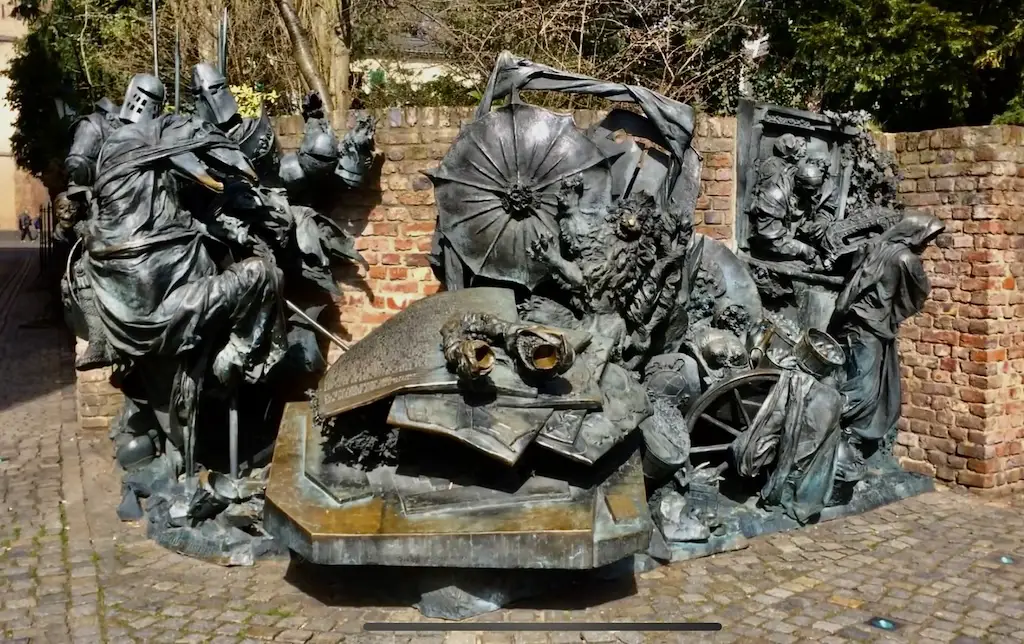
Jan-Wellem-Reiterstandbild: A Tribute to Elector Jan Wellem
Another significant monument in Altstadt is the Jan-Wellem-Reiterstandbild, an equestrian statue honoring Elector Johann Wilhelm II, affectionately known as Jan Wellem. Created by Gabriel de Grupello and unveiled in 1711, this statue stands proudly in the Marktplatz. Jan Wellem was a beloved ruler who significantly influenced the city’s development, and his statue serves as a central piece of Düsseldorf’s cultural heritage.
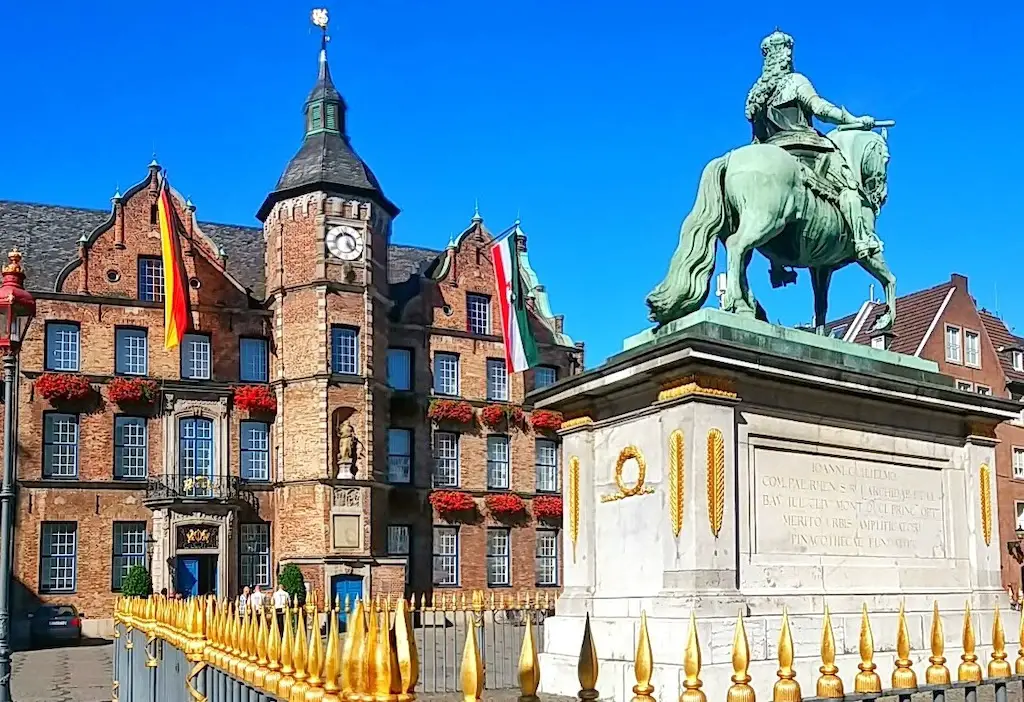
Stolpersteine: Remembering Holocaust Victims
Scattered throughout Düsseldorf, the Stolpersteine (stumbling stones) are small brass plaques embedded in the pavement. Each stone commemorates a victim of the Holocaust, placed in front of their last chosen place of residence. This initiative by artist Gunter Demnig serves as a powerful, decentralized memorial, ensuring that the lives of those lost during this dark period are not forgotten. As you walk through the city, take a moment to read the names and reflect on the individuals and families who once called Düsseldorf home.
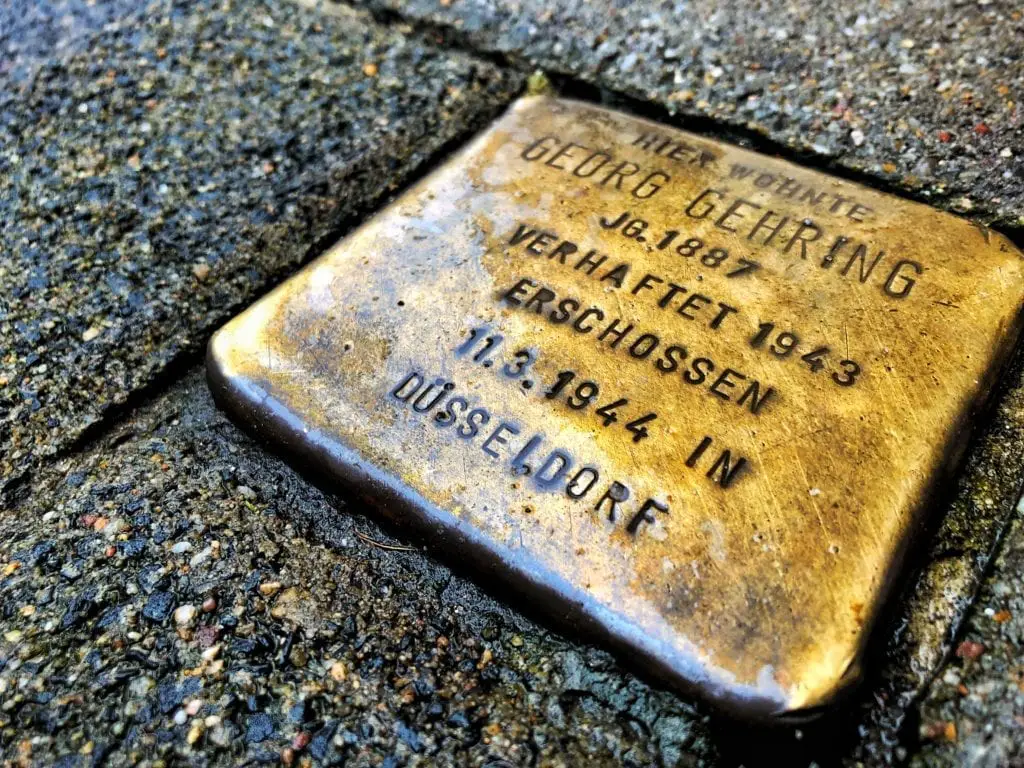
Mahn- und Gedenkstätte: A Memorial and Place of Remembrance
The Mahn- und Gedenkstätte (Memorial and Place of Remembrance) is dedicated to the victims of National Socialism. Located in the heart of the city, this site offers exhibitions and educational programs that shed light on the impact of Nazi rule on Düsseldorf and its citizens. It is a solemn space for reflection and education, ensuring that future generations remember the atrocities and learn from history.
Monument to the Unknown Artist: Celebrating Creativity
Beside the K21 Ständehaus, there is another notable sculpture, the Monument to the Unknown Artist by Thomas Schütte. This impressive, rusty brown statue is part of Schütte’s “Mann im Matsch” series. It honors the often unrecognized creative individuals who contribute significantly to the cultural landscape. The weathering steel gives it a distinctive appearance, making it a thought-provoking piece in the museum’s vicinity (VisitDuesseldorf) (Baukunst NRW) (Tripadvisor).
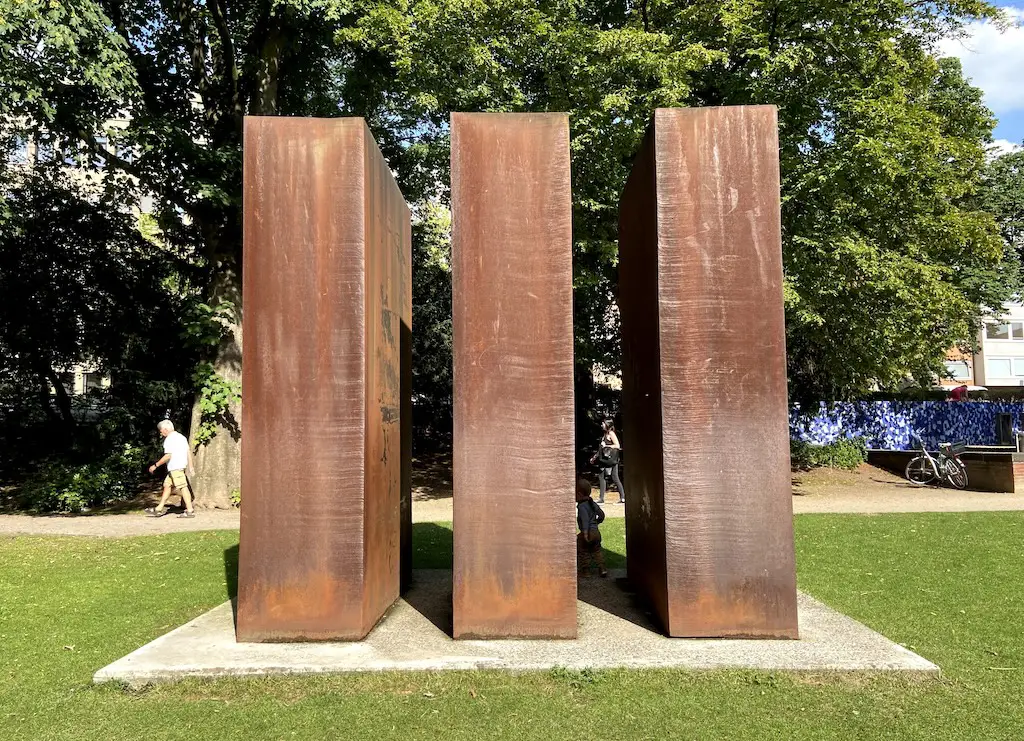
Heiligenstatue: Oberbilk – the father, son, and holy spirit
The statue in front of the church in Oberbilk is commonly known as the “Heiligenstatue” or the “Statue of the Holy Trinity.” This impressive sculpture depicts the Holy Trinity, typically represented as three figures—God the Father, Jesus Christ the Son, and the Holy Spirit—united as one divine being. The statue often serves as a focal point for religious devotion and reflection for both worshippers and visitors alike, standing as a symbol of faith and spirituality in the community. Its presence at the entrance of the church in Oberbilk adds to the spiritual ambiance of the area and invites contemplation and reverence from those who encounter it.
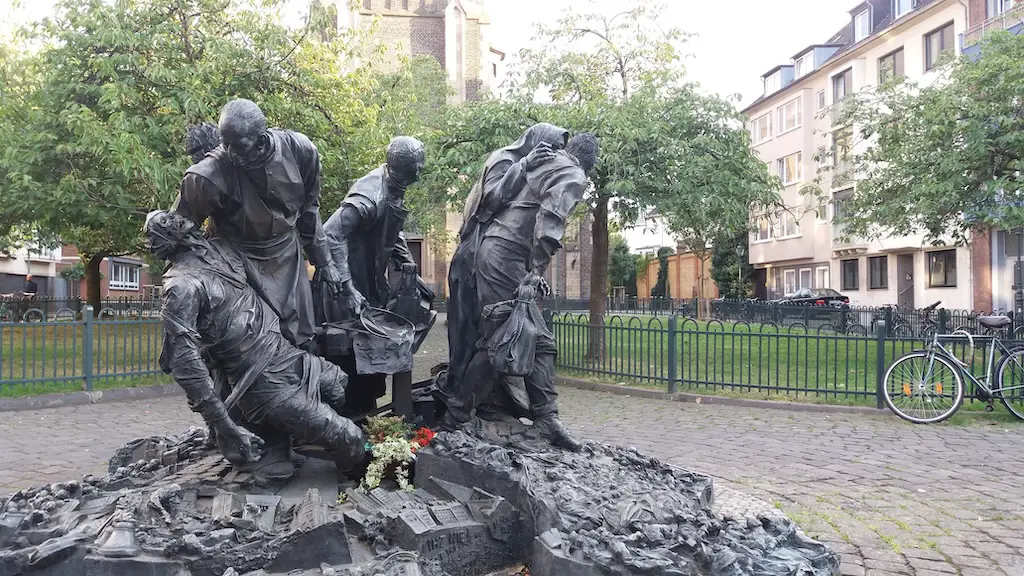
Vier Karyatiden: Representing art, music, architecture, and sculpture
In the heart of Düsseldorf stands a testament to artistic excellence and cultural heritage: the Vier Karyatiden (Four Caryatids). These four striking sculptures, located near the historic city center, captivate passersby with their graceful forms and timeless beauty. Carved in the neoclassical style, their presence not only enriches the architectural landscape but also serves as a reminder of the enduring legacy of artistry throughout the ages.
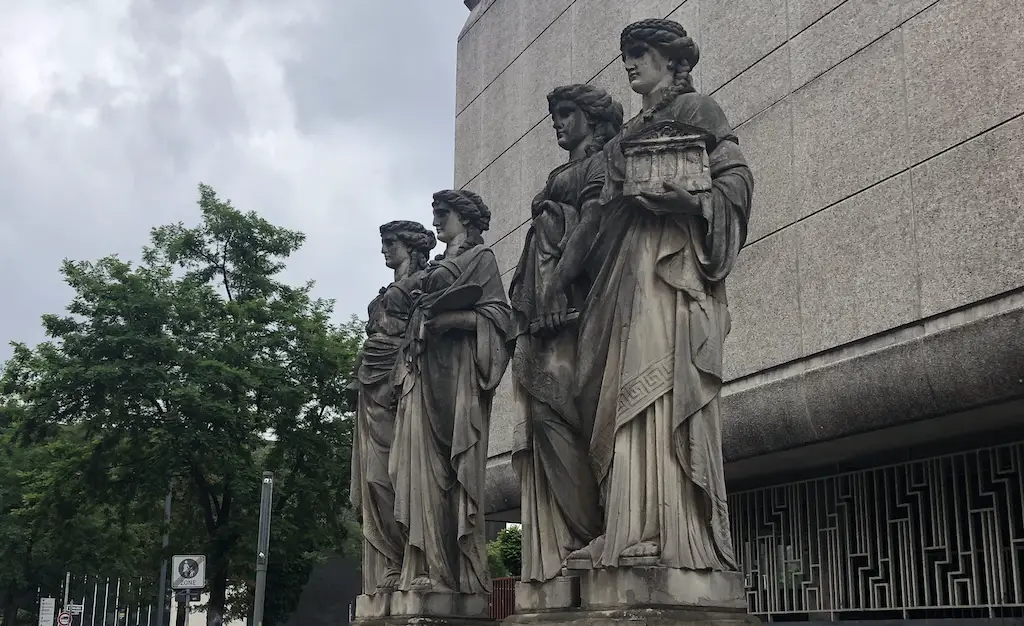
“Der Rufer” (The Caller) or “Rheinuferpromenade”
Created by sculptor Bert Gerresheim, this iconic statue depicts a man standing with outstretched arms, seemingly calling out or gesturing towards the surrounding area.
Installed in 1989, “Der Rufer” is a symbol of the city’s connection to the Rhine River and its historical role as a hub of trade and communication. The statue invites contemplation about the relationship between the city and its residents, as well as the importance of communication and community in urban life.
Surrounded by the vibrant atmosphere of Corneliusplatz, “Der Rufer” serves as a meeting point and a beloved landmark for both locals and tourists, adding to the charm and character of Düsseldorf’s city center.
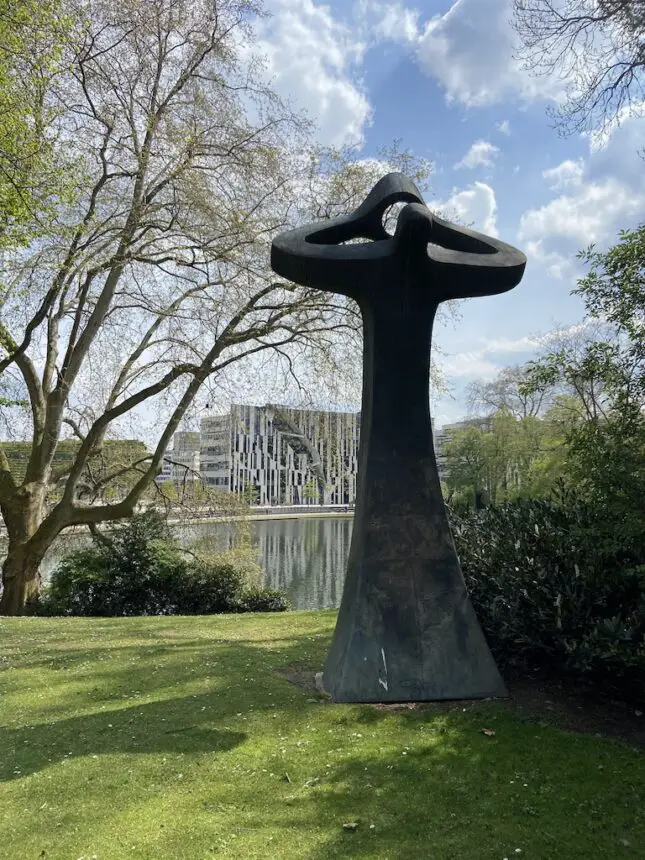
“Jan-Wellem-Brunnen” (Jan Wellem Fountain)
This magnificent fountain pays tribute to Johann Wilhelm II, Elector Palatine, commonly referred to as Jan Wellem, who ruled Düsseldorf during the late 17th and early 18th centuries.
The fountain features a central statue of Jan Wellem atop a horse, surrounded by various allegorical figures and symbols representing different aspects of his reign and Düsseldorf’s history. These include representations of art, science, industry, and commerce, alluding to Jan Wellem’s support for cultural and economic development in the city.
Constructed in the late 18th century, the Jan-Wellem-Brunnen has become an emblematic landmark in Düsseldorf, serving as a focal point for locals and visitors alike. It not only celebrates the legacy of Jan Wellem but also reflects the city’s rich heritage and its enduring connection to the arts, commerce, and innovation.
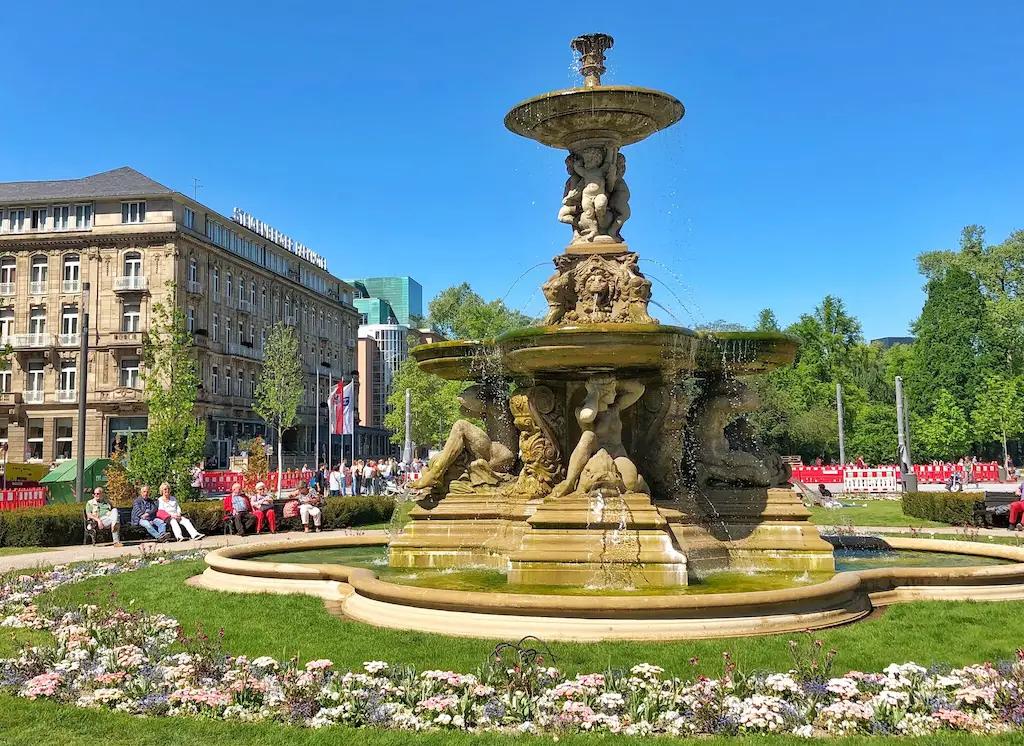
Uhlans’ Monument: Honoring the Cavalry
The Uhlans’ Monument commemorates the Uhlans, a historical light cavalry unit. This monument is a tribute to the soldiers who served in these regiments, reflecting their importance in the military history of Germany. It’s a significant reminder of the military traditions that have shaped Düsseldorf over the centuries.
Vater Rhein & seine Töchter: Mythical Representation of the Rhine
The Vater Rhein & seine Töchter statue group beautifully represents Father Rhine and his daughters. This artwork symbolizes the vital connection between Düsseldorf and the Rhine River, highlighting the river’s significance in the city’s economic and cultural life. Located near the Rheinuferpromenade, it’s a picturesque spot to appreciate the harmonious blend of nature and mythology.
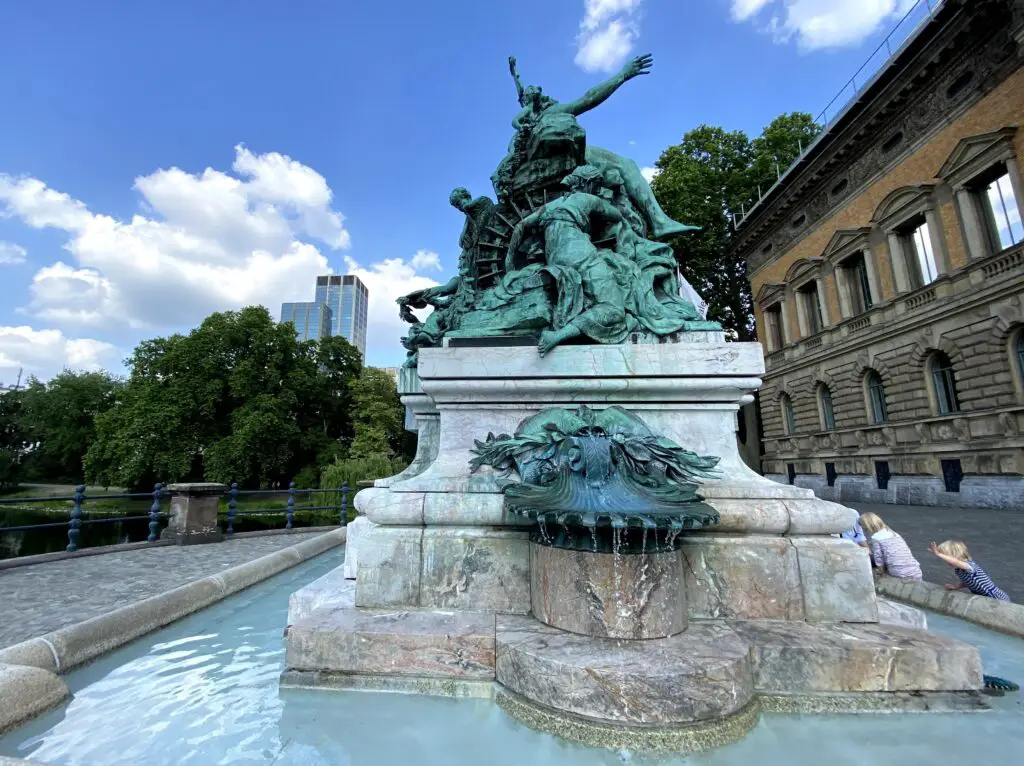
Martinssäule: Celebrating St. Martin
The Martinssäule is a monument dedicated to St. Martin, a revered figure in Christian tradition known for his acts of charity. Situated in the Altstadt, this column is a testament to the city’s religious heritage and the enduring legacy of St. Martin’s compassion and generosity.
Heinrich Heine Monument: Honoring the Famous Poet
The Heinrich Heine Monument pays homage to one of Düsseldorf’s most famous sons, the poet Heinrich Heine. Located in the Hofgarten, this statue celebrates Heine’s contributions to literature and his enduring influence on German poetry. It’s a fitting tribute to a literary giant who continues to inspire readers worldwide.
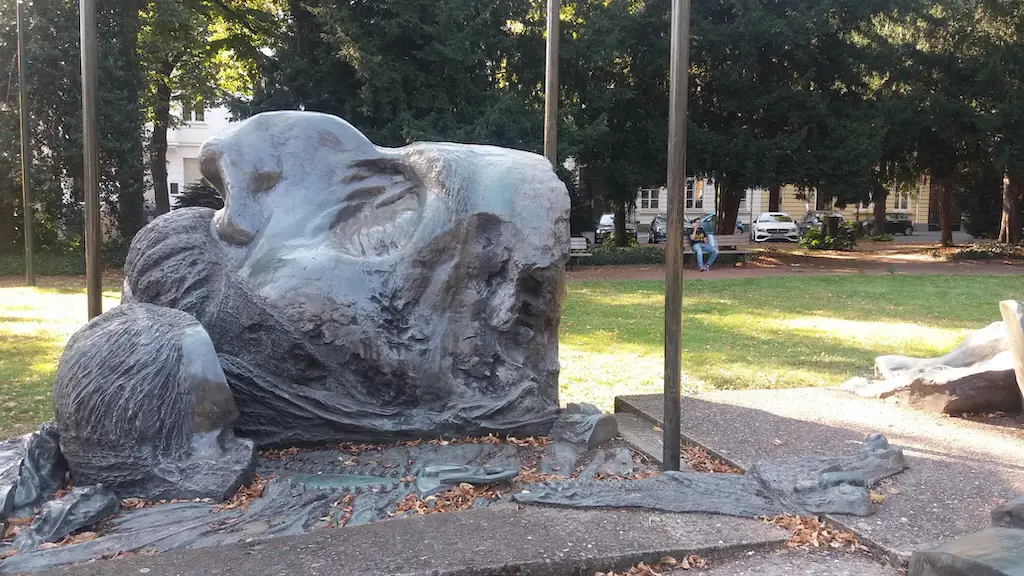
Peter von Cornelius Monument: Celebrating Artistic Legacy
Finally, the Peter von Cornelius Monument honors the renowned painter Peter von Cornelius. This statue, located near the Kunstakademie, commemorates Cornelius’s significant contributions to the art world and his role in shaping Düsseldorf’s artistic heritage. Cornelius is remembered not only for his works but also for his influence on future generations of artists.
Kriegerdenkmal: Reflecting on Sacrifice and Valor
In the Hofgarten, you’ll find the Kriegerdenkmal or War Memorial. This statue, depicting a fallen soldier with a lion at his feet, commemorates soldiers who lost their lives in various conflicts. The lion symbolizes strength and bravery, highlighting the valor and sacrifice of those honored by this monument. This evocative sculpture offers a powerful reminder of the cost of war and the enduring human spirit (GetYourGuide) (Moral Stories).
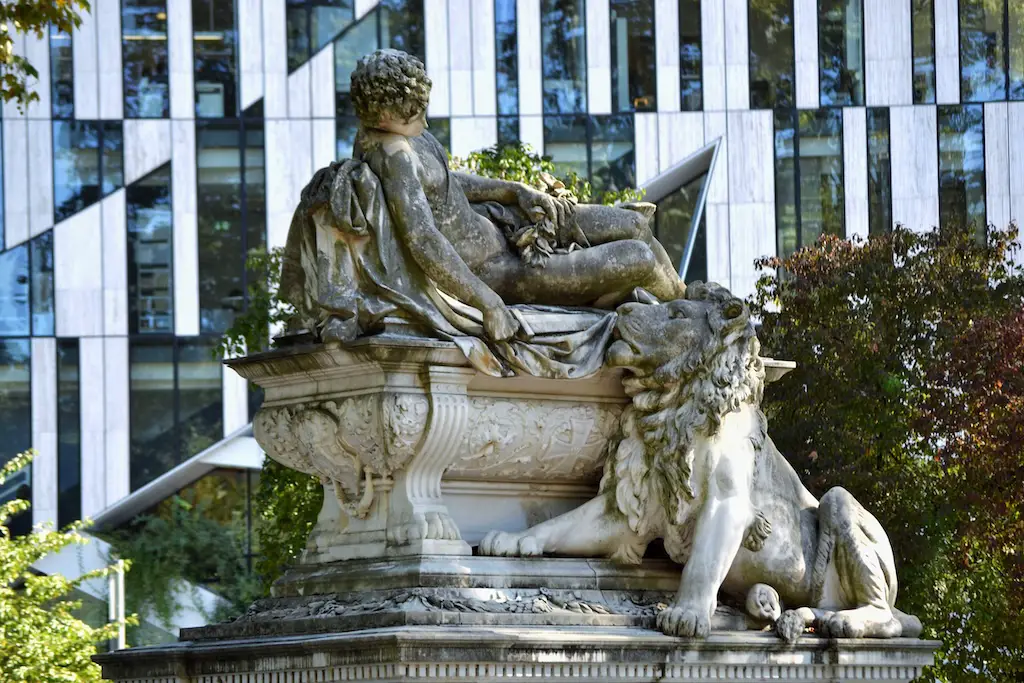
These Düsseldorf monuments and memorials offer a rich tapestry of the city’s history, from medieval times to modern-day reflections on the past. Each site provides a unique window into the events and figures that have shaped Düsseldorf, making them essential stops for anyone looking to understand the city’s heritage. Whether you’re a history enthusiast or simply enjoy exploring cultural landmarks, these monuments provide a meaningful way to connect with Düsseldorf’s storied past.
Remember to share your experiences and thoughts in the comments below, and don’t forget to follow @lifeindus on Instagram for more insights into the city’s vibrant culture and history!
Are you a history fan? There are so many other incredible and moving stories around Düsseldorf’s history that we have right here on the blog! Why not look into the story of the Düsseldorf vampire, the heroes who saved Düsseldorf, or why the St. Lambertus Church tower is twisted?!


